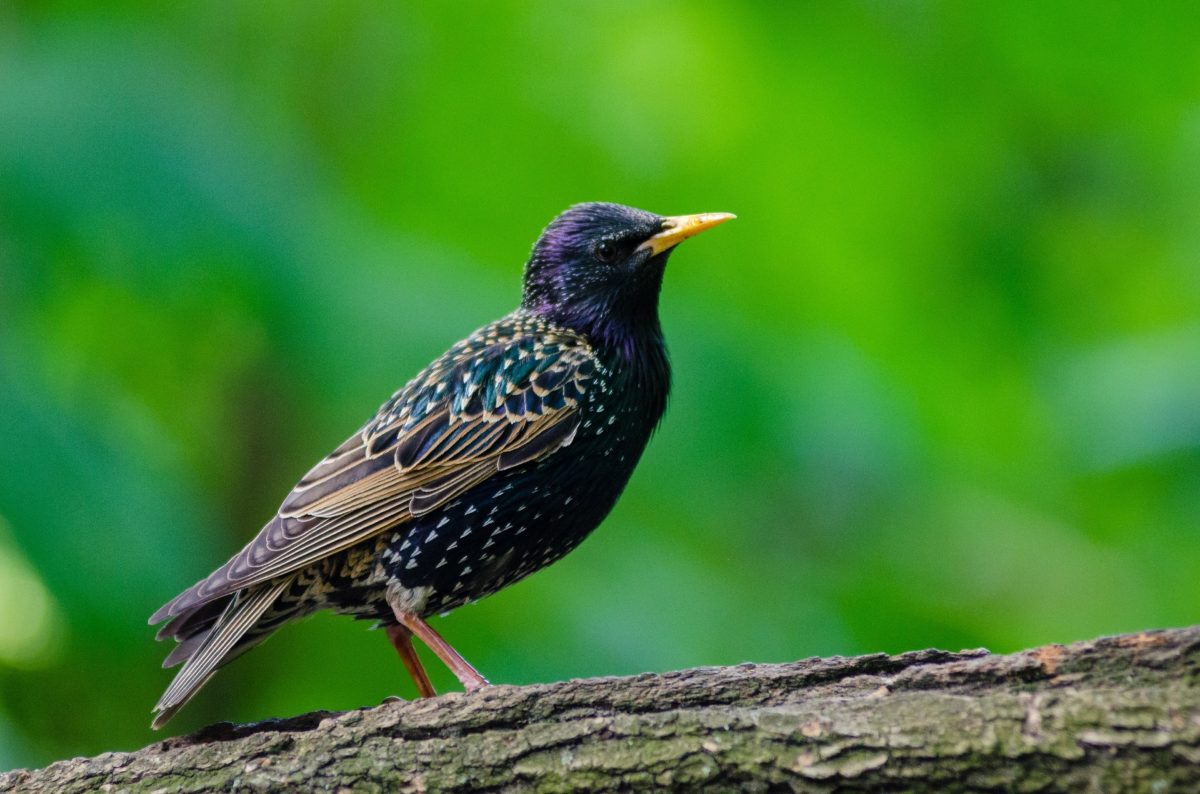Starlings & Murmurations

by Tyler Colbourne, Community Director
I first fell in love with starlings 10 years ago while walking home one day. While on my short journey through my neighbourhood I found the legs of a small bird sticking out of a hole in a concrete wall, unmoving, and apparently stuck and possibly dead. After plucking the bird out of the hole and walking away while dreaming of how to fashion a makeshift burial for it in my mother’s backyard, the little creature came back to life.
I was startled, it was slow and curious, and for a few minutes we stared at each other in wonder and amazement before it flew off and lived its merry little life. A few minutes later I was on the internet searching for facts and information about the bird that came back to life in my hands. It was a starling and I was charmed.
Since that time I have come to appreciate starlings for many reasons. They are scrappy, they have beautiful iridescent feathers, and I once saw one steal a french fry from a tourist down on the Halifax waterfront. On top of these amazing qualities, it is their murmurations that inspire me the most. To quote Sierra Picket, via adrienne maree brown in Emergent Strategy:
“Starlings’ murmuration consists of a flock moving in sync with one another, engaging in clear, consistent communication and exhibiting collective leadership and deep, deep trust. Every individual bird focuses attention on their seven closest neighbors and thus manage a larger flock cohesiveness and synchronicity (and times upwards of over a million birds).”
– Sierra Pickett, quoted in Emergent Strategy, p 67

Starlings reflect a way of being in systems leadership. Each bird in a murmuration is a participant and leader within a complex and ever-evolving system. Each has the power to shape the direction and shape of the whole system, each has the power to create entirely new constellations. I like to think that each of us has the capacity to be like starlings.
As opposed to systems reflected by other creatures such as geese, there doesn’t need to be one bird at the head of a group. Likewise, there does not need to be one leader in a group or organization, as in traditional hierarchical organizational structures. If we are paying attention and are attuned to the relationships within our micro networks, we have the ability to make a difference and influence greater change in our macro systems.
Besides being able to steal french fries from unsuspecting tourists, perhaps each of us has the ability to lead from wherever we are.
Featured image by Pexels from Pixabay
Read more about murmurations as a social innovation model here.
Share this:
No Comments
[…] For more insight into starlings and murmurations, see Inspiring Communities’ Tyler Colbourne’s reflections on Starlings & Murmurations. […]
Such a great metaphor for collective leadership.. I have to get on with reading Adrienne Maree Brown!
Thanks Megan! I love starlings and I am always happy to be able to talk about them!!!